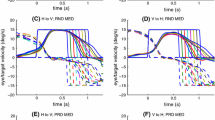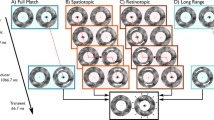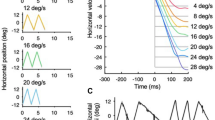Abstract
Regular, repeated presentation of identical constant-velocity target motion stimuli (ramps) appears to allow build up of an internal store, release of which can be used to generate anticipatory smooth pursuit prior to subsequent target onset. Here, we examine whether release of the anticipatory response can be controlled by timing cues unrelated to the motion stimulus itself. In experiment 1, the target moved in alternate directions and was exposed for 480 ms as it passed through centre; otherwise subjects were in darkness. Inter-stimulus interval (ISI) was either regular (3.6 s) or randomized (2.7–4.3 s). Presentations were given with or without audio cues that occurred at a constant cue time (CT) prior to target appearance. Even when ISI was randomized, cues could be used to generate anticipatory smooth pursuit. Eye velocity (V100) measured 100 ms after target onset (just prior to visual feedback influence) was greater with cues than without and decreased significantly as CT increased from 240–960 ms. In experiment 2, we assessed the effects of fixation between presentations and eccentricity of target starting position, using unidirectional ramps. The target was visible for 400 ms and started on, ended on or straddled the midline. Subjects held fixation on the midline until an audio cue signalled that preparation for ensuing target appearance could begin. There was no difference in V100 between starting positions or between presence/absence of fixation. In experiment 3, we compared the effects of using audio, visual or tactile cues. All types of cue evoked anticipatory smooth pursuit, but the response to the visual cue was significantly delayed compared with the others. However, V100 was not significantly different between cues. In all experiments, V100 was scaled in proportion to target velocity over the range 12.5–50°/s, showing that this was a truly predictive response. The results provide evidence that timing and velocity storage can be independently controlled through different sensory channels and suggest that the two functions are probably carried out by separate neural mechanisms.
Similar content being viewed by others
Author information
Authors and Affiliations
Additional information
Received: 3 December 1998 / Accepted: 11 May 1999
Rights and permissions
About this article
Cite this article
Barnes, G., Donelan, S. The remembered pursuit task: evidence for segregation of timing and velocity storage in predictive oculomotor control. Exp Brain Res 129, 57–67 (1999). https://doi.org/10.1007/s002210050936
Issue Date:
DOI: https://doi.org/10.1007/s002210050936




